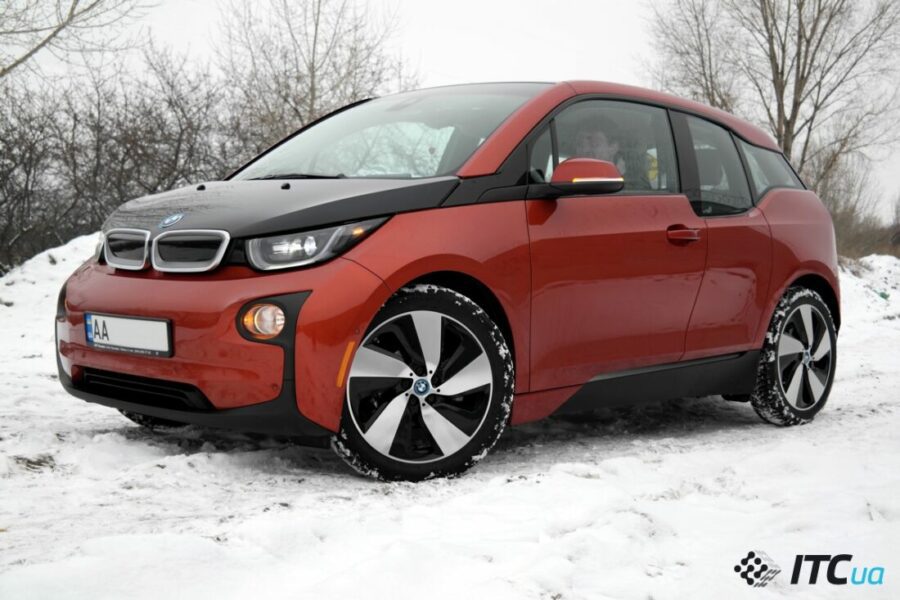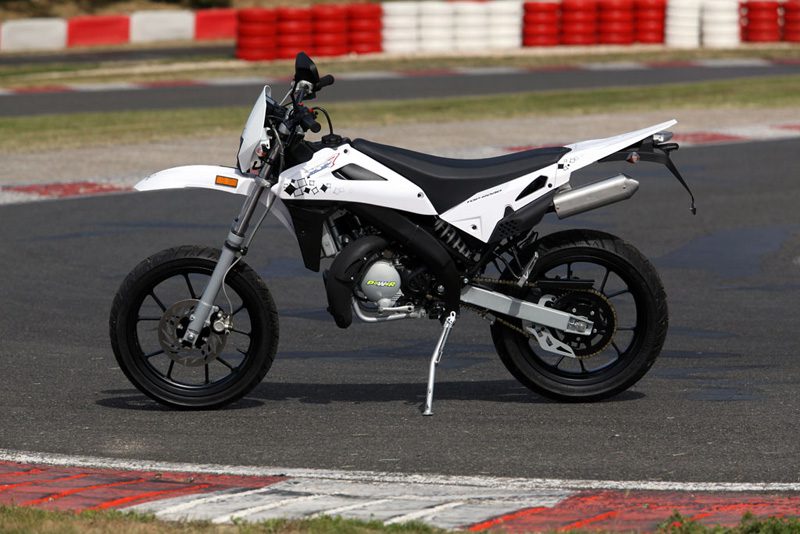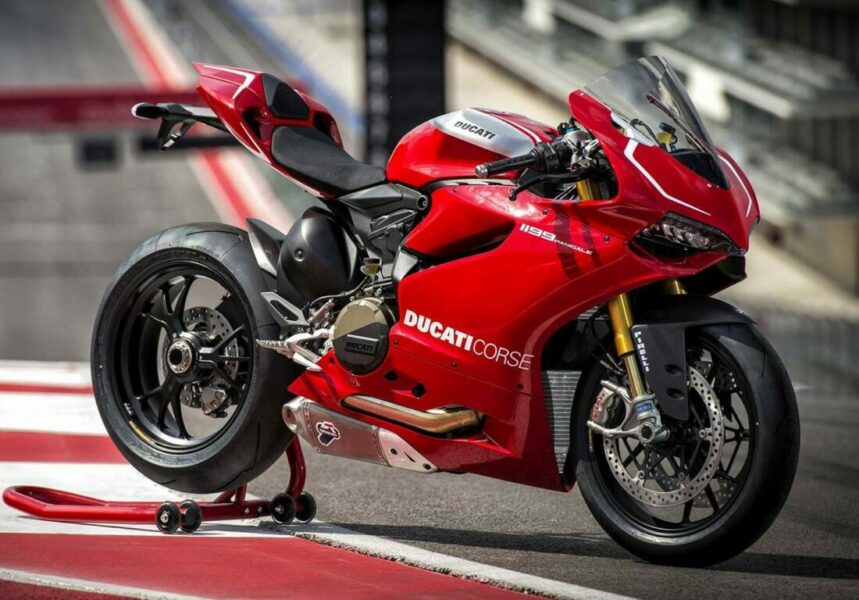
BMW i3 REX
Yes, this fear may initially be present in electric car drivers. BMW solved this problem in its first all-electric car, the i3, in a simple way: they added a small 657cc engine. See and power 34 "horsepower". It was removed directly from the BMW C650 GT maxi scooter and installed at the rear right under the trunk. Sure, it's not powerful enough to run the i3 at the same power as the electric motor when the battery is fully charged, but if you switch the i3 to battery saving mode early enough, the total range is around 300 kilometers, consuming only nine. liters of gasoline, as it goes into a small container designed for two-cylinder gasoline. Sound?
The range extender sounds audible, of course, but overall it is not overly noisy, especially since the i3 does not boast excellent sound insulation and is therefore quickly suppressed by the wind noise around the body. Do you need a range extender at all? With the test i3, we drove almost all over Slovenia, even to ends where there are very few charging stations, and also when we knew there would be no time at the finish line to charge a return fee. Result?
Shortly before the end of the test, we had to deliberately drain the battery in order to turn on the range extender so that we could even test it. In fact, a range extender can only come in handy for those who think of the i3 as their only car, and very, very rarely. Look at it this way: a base i3 with a 22kWh battery costs a nice 36k (minus 130 subsidies, of course) and you'll get about 140, 150, maybe even 3 kilometers with it. The new i94 33 Ah, that is, with a 180 kWh battery, has a range of 210 to 3 kilometers in the same conditions, but it costs only a thousand more than a model with a smaller battery and almost three and a half thousand. smaller than iXNUMX with smaller battery and range extenders…
The statistics also show that the range extender is becoming less and less used and popular. Initially, about 60 percent of the owners of these cars used it, but now this share has fallen below 5 percent. The development of the charging network and getting used to the car is simply necessary. Okay, so much about the range extender, what about the rest of the car? If you think ecology is all about carefully crafted interiors or appliances worthy of a spaceship, you'll be surprised again. The interior uses superior materials and the car feels more like a modern living room than an electric car due to its wood and shapes. But the biggest plus was earned with sensors. The i3 is proof that "sci-fi" devices are completely unnecessary. In front of the driver is a rectangular, not too big LCD screen (on which black is really black at night), which clearly and transparently gives only the information that is important for driving. Speed, power flow, battery status in the middle, and on both sides the main data of the trip computer and the selected operating mode. The rest of the BMW designers have moved to a large screen in the middle of the center console, where you can see the work of Poga.
The i3 can operate in three modes: Comfort, Eco, and Eco Pro, and since it's an i3 with a range extender, it also has the ability to save battery that the regular i3 doesn't have. What about charging? Of course, you can from a purely ordinary home outlet, and overnight the i3 battery will be fully charged again. In addition to the classic slow AC charging (i3), there are two other fast charging options (only at an additional cost!): From the most common chargers with type 2 connection, AC power and 7 kilowatts, and at DC fast charging stations . through the CCS connector at 50 kilowatts. The latter significantly reduces charging time from about eight hours: it charges the 18,8 kWh battery to 80 percent in less than half an hour. And reach? The official one is 190 kilometers, but the official standard is, of course, too outdated to be relied upon. You can realistically count on 130-150 kilometers of carefree and not necessarily economical driving in winter with less efficient winter tires, with the heating always on (especially if the i3 does not have an additional heat pump) and even less, down to 110 kilometers. Remarkably, the accelerator pedal is tuned so that the car begins to regenerate energy at full power when the driver lowers it all the way down. The decelerations are enough that you can even drive around the city without hitting the brake pedal, as the i3 also comes to a complete stop and stops at the end.
The downside of the lightweight design but slightly higher center of gravity (but the i3 sits nicely high) is the rather stiff suspension setup that is applied on bad roads where the i3 could be more comfortable and more drivable. friendly. Narrow tires also provide significantly longer stopping distances than we're used to in classic cars; 43 meters to a stop is about 10 percent worse than conventional classic cars in this class, and that's good to keep in mind. The weight of the i3 is very low due to the use of lightweight materials. Just over 1,2 tons is a result that even a classic car without batteries would not be ashamed of. There's plenty of room for four in the cabin (but the trunk is a bit smaller than expected), and since the i3 doesn't have a center hatch, you'll first need to open the front and then the rear doors, which open back to gain access. rear seats. Cute, but sometimes a bit annoying in terms of usability. But if it's an electric car (albeit with a range extender) that requires some compromises on its own, we can easily survive that too.
Душан Лукич photo: Саша Капетанович
BMW I3 Rex
Basic data
| Base model price: | 41.200 € |
|---|---|
| Test model cost: | 55.339 € |
| Power: | 125kW (170 KM) |
Cost (up to 100.000 km or five years)
Technical information
| engine: | electric motor - maximum power 125 kW (170 hp) - continuous output 75 kW (102 hp) at 4.800 rpm - maximum torque 250 Nm from 0 / min. Battery: Lithium Ion - rated voltage 360 V - 22,0 kWh (18,8 kWh net). Extender range: 2-cylinder - 4-stroke - in-line - turbocharged petrol - displacement 647 cm3 - maximum power 28 kW (38 hp) at 5.000 rpm - maximum torque 56 Nm at 4.500 rpm. |
|---|---|
| Energy transfer: | the engine drives the rear wheels - automatic transmission 1 speed - tires 155 / 70-175 / 65 R 19. |
| Capacity: | 150 km/h top speed - 0-100 km/h acceleration 7,9 s - Combined average fuel consumption (ECE) 0,6 l/100 km, CO2 emissions 13 g/km - Electricity consumption (ECE) 13,5, 100 kWh / 170 km - electric range (ECE) 30 km - battery charging time 50 min (8 kW), 10 h (240 A / XNUMX V). |
| Mass: | empty vehicle 1.315 kg - permissible gross weight 1.730 kg. |
| External dimensions: | length 3.999 mm – width 1.775 mm – height 1.578 mm – wheelbase 2.570 mm – trunk 260–1.100 9 l – fuel tank XNUMX l. |

